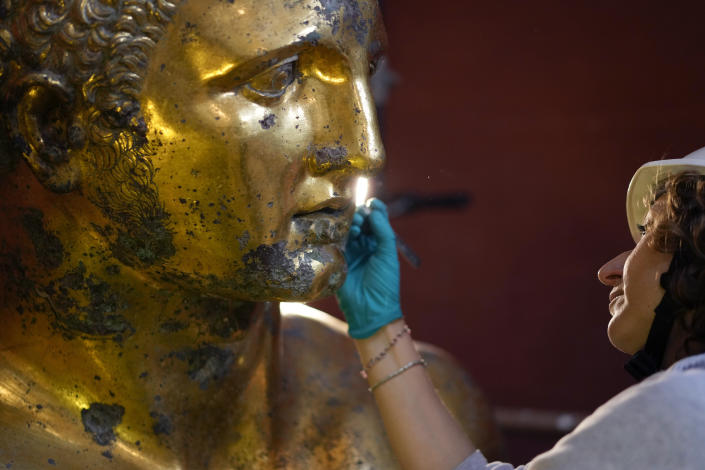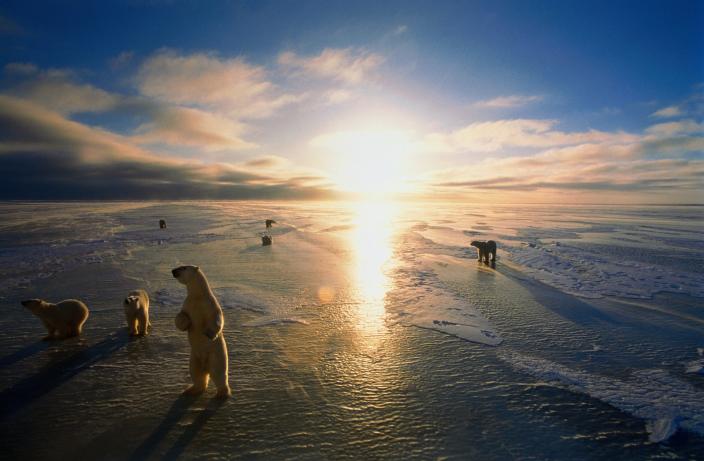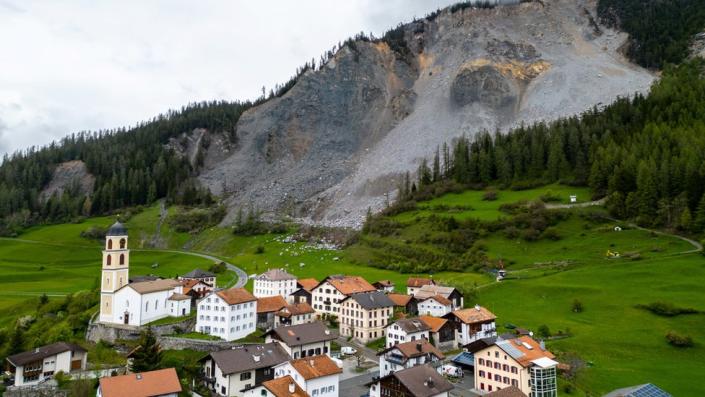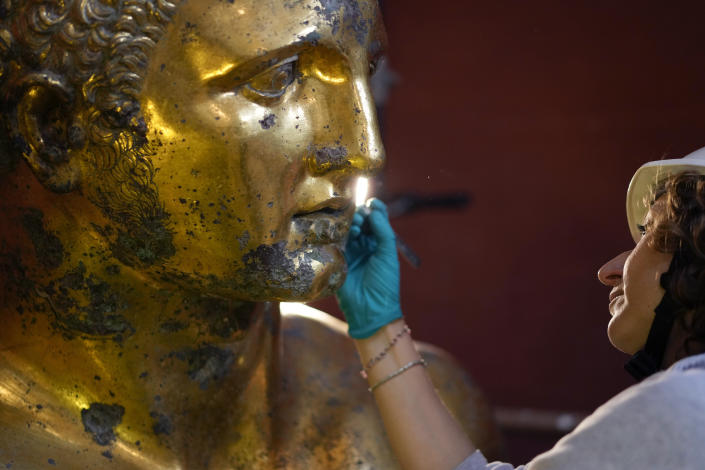Science Daily News | 14 May 2023

Views (191)

Balloons detect mysterious sounds in the stratosphere below the human hearing limit. Scientists can't explain.
Solar-powered balloons in the stratosphere can hear ocean waves crashing, wind turbines spinning, earthquakes rumbling, and a mysterious crackling.

Listen to the sounds a balloon hears 12 miles above Earth: from ocean waves to volcanic eruptions.
"In the infrasound domain our planet is very rich," Bowman, a scientist at Sandia National Laboratories, told Insider. "I think one of the reasons humans can't hear infrasound is because we'd go nuts if we could."
Take the sound of the ocean, which you can hear alongside the mystery sound in the recording below. This is 19 days of infrasound recordings, sped up by 4,400 times.
The first thing you hear is the sound of ocean waves crashing, far below. That's the sighing sound in the background. If you could hear that with your own ears, it would be as loud as watching TV, and it would go on for days.
Then there's a flurry of crackling and rustling. That's the mystery sound.
It could be turbulence, distant thunderstorms, or meteors burning up as they plummet through the atmosphere. According to Bowman, this noise also appeared in the last infrasound balloon program in the 1960s.
"We've been picking it up 50 years ago and we're still picking it up, still don't know what it is," Bowman said.
Almost every flight picks up unidentified sounds, according to Bowman.
"It's not like there's something inherently mysterious or really profoundly different up there. It's more due to our own ignorance," he said.
The world of infrasound is vast and largely unmapped. In the lower parts of the atmosphere, sound bends upwards, so the stratosphere is the perfect place to hear the hidden sounds of the planet — even from events thousands of miles away.
Bowman started using these balloons to listen for the rumblings of volcanoes, hoping to contribute to understanding them better and maybe even improving early-warning systems for eruptions. But it turns out there's even more to hear in the stratosphere.
But Bowman wants to see more people flying infrasound-recording stratosphere balloons.
"This is something that a group of middle schoolers could do," he said. "The more eyes in the sky, or ears in the sky we get, the more we learn."
He estimates that his research team has flown 100 of these balloons, each one made of just $50 of materials that you can buy at a hardware store.
Weather balloons are often designed to rise up and up and up, gathering data all the way, until they pop, then parachute to the ground. To gather sound recordings, though, Bowman needs his balloons to hang out in the stratosphere. They also need to move at the speed of the wind, so it doesn't roar past and drown out the faint noises he wants to catch.
That's why he builds his hot-air balloons out of dark material that absorbs energy from the sun, but only enough to rise to the stratosphere and stay there.
At sunset, the balloon cools and comes back down.
"You don't have to worry about balloons that just keep on going, off into places they shouldn't go," Bowman said.
He thinks anyone can build such a balloon by securing an old cell phone to it, recording infrasound with the RedVox app, and sending it into the stratosphere.
Just don't forget one crucial step:
"In the current environment, I highly recommend reaching out to the [Federal Aviation Administration] and notifying the FAA of your intent to launch a balloon, so that they know what it is and so that it is not misinterpreted," he said.
Oxfordshire zero-emission fire engine project awarded £4m
The government grant is aimed at delivering a prototype fire appliance, ambulance and road sweeper.

A project to develop zero-emission fuel cells for fire engines, ambulances and road sweepers has won a £3.9m government grant.
Engineering firm Ulemco is working with Oxfordshire County Council on powering the vehicles by hydrogen.
The firm said the award, matched by another £3.9m from the automotive industry, would fund research into how to extend the vehicles' range.
The council said it was a promising step towards net zero emissions.
Liverpool-based Ulemco said the project would deliver a "production-ready, zero-emission ambulance", a fully working prototype fire pumping appliance and a road sweeper.
The vehicles would have a combination of stored energy in their batteries and onboard hydrogen fuel storage, and could be refuelled rapidly.
Oxfordshire's chief fire officer, Rob MacDougall, said: "Heavy fire engines pose a particular challenge and we feel that hydrogen-powered fuel cells can play a promising role in delivering on the county's climate action ambitions."
Inside Canada's polar bear 'jail' where bears go without food and are kept behind bars — but it's not what you might think
Polar bear "jail" is a holding facility in Churchill, Canada, where humans and bears live among each other. It has saved many bear and human lives.

Churchill, Canada, has a polar bear population that matches its human population.
The town's Polar Bear Holding Facility, aka "jail", helps bears and humans live harmoniously.
The facility is only reserved for the most unruly bears that pose a threat to town residents.
It's the only town in the world where people and polar bears live in close proximity — and the only town that has a polar bear "jail", aka the Polar Bear Holding Facility.
Each year at the end of July, the bears come off the melting sea ice in to spend their summers in Wapusk National Park.
Churchill lies between the two, which makes it a busy spot for bear traffic.
In October and November, the ice begins to form again, and the bears make another mass exodus back to the ice to hunt seals.
By the fall, they're hungry and willing to eat almost anything. Thus, bears are most likely to show up in or near Churchill during the first three weeks of November, before the bay freezes, a spokesperson from the province told Insider.
So, how does the town keep residents and tourists safe from chance encounters with the largest land carnivore on Earth? With a unique Polar Bear Alert program, the only one of its kind in the world, said Chantal Cadger Maclean, a conservation officer who works for the program.
Bears occasionally venture into town before "bear season" begins in early November.
"Earlier in the year they're fat and happy from eating seals, so they're not actively looking for food," Maclean said. "But they're opportunistic hunters, so if something's around, they'll eat it."
"Something" usually means garbage that isn't contained properly. Humans generally don't make up part of a polar bear's diet, but a starving bear won't be picky.
So, because bears visiting town are more likely to have a dangerous encounter with humans, conservation officers aim to get them out of town as quickly and safely as possible.
The bears get plenty of chances to leave town before they're trapped and taken to the Polar Bear Holding Facility, Maclean said, and the first step involves lots of loud noise.
Anytime someone calls the Polar Bear Alert number (that's 204-675-BEAR), the conservation officers on call drop what they're doing and rush to the location.
They use horns, sirens, and "screamers," which are shotguns loaded with scare cartridges, to gently encourage and guide the bear west out of Churchill. Helicopter teams can also spot bears hiding in the rocks and drive them farther away from town.
Bears are very receptive to loud sounds, so these methods usually work, Maclean said — though occasionally, officers may need physical deterrents like rubber bullets or paintballs to help move more stubborn bears along.
But a few bears aren't scared of humans and refuse to leave town.
And bears who've learned to associate people with food sources might come back to check out trash cans and visit the waste management facility. These are the bears that end up in the holding facility at the edge of town.
"We only go hands-on with bears when they won't be hazed, and we know if we allow them to continue displaying the same behavior, they'll have a negative encounter," Maclean said. "It's a bear's last step, as bears who have negative encounters with people have to be euthanized."
Conservation officers trap bears in one of two ways: using a dart gun containing Telazol to immobilize them or baiting a culvert trap with seal meat.
From there, they bring the bear to one of the facility's 28 cells. These include large cells for groups of mothers and cubs, air-conditioned cells to keep bears cool in the warmer months, and individual cells.
The team takes measurements, like length and girth, and gives the bears ear tags for tracking purposes. Then, the captured bears stay in the facility for 30 days or until ice begins to form on Hudson Bay — whichever comes first.
"If there's enough ice on the bay to physically drive trucks with bears in the trap onto the ice, we let them go and typically we never see them again," Maclean said. Otherwise, they release the bears by helicopter along the coast, far out of town.
Bears don't get fed in the facility, though they do get water and snow.
Giving the bears food would teach them to associate food with people and make it more likely they'd come back to town, Maclean said, adding that going without food doesn't harm the bears, since they live off their fat stores in the summer months and typically wouldn't be eating anyway.
The point is to give them an experience they won't want to repeat.
The holding facility isn't a punishment for "bad" bears. "These bears aren't bad at all. They're just trying to do what bears do — get on the ice and make their living," Maclean said.
So, this predator coexistence program manages Churchill's bears instead of killing them, which was standard practice before the program's introduction in the late 1960s.
Many more bears would get shot without the program, Maclean said.
The number of bears who come into town vary widely from year to year, from four bears all the way up to 378 bears in 2003, Maclean said. It all depends on the ice conditions, like the location of last ice.
"Bears will stay on the ice as long as possible. So, if the last bit of ice is near Churchill, we'll see significantly more bears. 2016 was a high bear year, just because the last ice was close to town," Maclean said.
Churchill residents know there's always a possibility of encountering a bear.
"You're never 100% safe. You always have to have your head on a swivel," Maclean said.
Many residents also leave their homes and cars unlocked, Maclean said, in case someone walking down the road needs to make a quick escape.
"If you encounter a bear on the street, your best bet is to stay quiet, slowly back away, and get into a house or vehicle immediately, as long as the bear doesn't notice you," Maclean said.
As soon as you're safe, call the hotline so the team can come move the bear along.
Never run if the bear does see you and begins to approach, since this will activate their predator instinct.
If they get hold of you, you're fighting for your life.
"Punch up as hard as you can, aiming for soft spots like the nose and eyes, and scream as loud as you can for help. This could save your life," Maclean said.
Giant East Yorkshire puffin statues to be auctioned for charity
The statues were previously on show along the East Yorkshire coast in a bid to boost tourism.

Giant sculptures of puffins which have been on display along the East Yorkshire coast are to go under the hammer later to raise cash for charity.
The 42 fibreglass effigies had been on show in Withernsea, Hull, Bempton, Kilnsea, Bridlington and Hornsea.
The Puffins Galore arts trail closed in April, with 14 of the birds now up for grabs at an auction in Bridlington.
Andrew Baitson, from Gilbert Baitson Auctioneers, said: "We love auctioning these wonderful animal sculptures."
Mr Baitson said the bird sculptures "generate so much interest and there's a very special excitement in the room when they come under the hammer.
"And, of course, it's great to get the very best price so that the charities all benefit."
The Puffins Galore project aimed to attract visitors to the coast in East Yorkshire while highlighting threats to wildlife.
The proceeds from the sale of the 14 artworks are to be be donated to the project's charity partners, the RNLI, RSPB, Hornsea Inshore Rescue and Yorkshire Wildlife Trust.
A spokesperson for Puffins Galore said the charities were selected for their "important role in the protection of the wildlife of the seas and coasts, or for their essential work saving lives at sea".
The puffins which will not be included in the auction have been purchased by their sponsors and will be going to their new homes after auction day, with some remaining on public display.
Kerry Carruthers, chief executive of Yorkshire Coast Business Improvement District, said the Puffins Galore project had "really brought together areas across the Yorkshire coast, as well as driving footfall to the area.
"This final chapter for the puffins is a fantastic way to give back and support some of our well-respected charity partners," she added.
Director of Puffins Galore, Rick Welton, said about 200,000 people had participated in the sculpture trail, which had "encouraged visitors to quieter parts of the East Yorkshire coast and raised awareness of local businesses and organisations".
The project had "really captured the public's imagination", Mr Welton added.
Swiss village of Brienz evacuated over risk of imminent rockslide
Brienz's 100 residents, as well as the village's dairy cows, were given 48 hours to evacuate.

Residents of a tiny Swiss village have all been evacuated because of the risk of an imminent rockslide.
Brienz's fewer than 100 villagers were given just 48 hours to pack what they could and abandon their homes.
Even the dairy cows were loaded up for departure after geologists warned a rockfall was imminent.
Two million cubic metres of rock is coming loose from the mountain above, and a rockslide could obliterate the village.
The development has raised questions about the safety of some mountain communities, as global warming changes the alpine environment.
Brienz, in the eastern canton of Graubünden, is now empty.
The village has been judged a geological risk for some time and is built on land that is subsiding down towards the valley, causing the church spire to lean and large cracks to appear in buildings.
As the minutes ticked towards the deadline to leave, even Brienz's dairy cows were being taken to safety.
The residents, some young, some old, families, farmers and professional couples, had two days to abandon their homes.
They were asked earlier this week to evacuate the village by Friday evening.
Switzerland's Alpine regions are especially sensitive to global warming - as the permafrost high in the mountains begins to thaw, the rock becomes more unstable.
This particular mountain has always been unstable, but recently the rock has been shifting faster and faster.
Days of heavy rain could bring two million cubic metres of loosened rock crashing down the mountainside onto the village, scientists warned.
Now the villagers must wait, in temporary accommodation, for the rock to fall - and hope it misses their homes.
Vatican experts uncovering gilded glory of Hercules statue struck by lightning
Scaffolding in a niche of the Vatican Museums’ Round Hall conceal from view the work of restorers who are removing centuries of grime from the largest known bronze statue of the ancient world: the gilded Hercules Mastai Righetti. Museum-goers will be able to see its grandeur for themselves once the restoration is finished, which is expected in December. “The original gilding is exceptionally well-preserved, especially for the consistency and homogeneity,” Vatican Museum restorer Alice Baltera said.

VATICAN CITY (AP) — Scaffolding in a niche of the Vatican Museums’ Round Hall conceal from view the work of restorers who are removing centuries of grime from the largest known bronze statue of the ancient world: the gilded Hercules Mastai Righetti.
For more than 150 years, the four-meter-tall (13-foot-tall) figure of the half-human Roman god of strength has stood in that niche, barely garnering notice among other antiquities because of the dark coating it had acquired.
But it was only after removing a layer of wax and other material from a 19th-century restoration that Vatican experts understood the statue's true splendor as one of the most significant gilded statues of its time. Museum-goers will be able to see its grandeur for themselves once the restoration is finished, which is expected in December.
“The original gilding is exceptionally well-preserved, especially for the consistency and homogeneity,” Vatican Museum restorer Alice Baltera said.
The discovery of the colossal bronze statue in 1864 during work on a banker’s villa near Rome's Campo dei Fiori square made global headlines.
Visitors drawn to the ancient wonder at the time included Pope Pius IX, who later added the work to the papal collection. The statue depicting Hercules after he finished his labors had the last names of the pope — Mastai — and of the banker, Pietro Righetti, added to its title.
The statue has been variously dated from the end of the first to the beginning of the third centuries. Even in its day, the towering Hercules was treated with reverence.
The inscription FCS accompanying the statue on a slab of travertine marble indicates it was struck by lightning, according to Claudia Valeri, curator of the Vatican Museums department of Greek and Roman antiquities. As a result, it was buried in a marble shrine according to Roman rites that saw lightning as an expression of divine forces.
FCS stands for "fulgur conditum summanium, a Latin phrase meaning “Here is buried a Summanian thunderbolt.” Summanus was the ancient Roman god of nocturnal thunder. The ancient Romans believed that not only was any object stricken imbued with divinity, but also the spot where it was hit and buried.
"It is said that sometimes being struck by lightning generates love but also eternity,’’ Vatican Museums archaeologist Giandomenico Spinola said. The Hercules Mastai Righetti “got his eternity … because having been struck by lightning, it was considered a sacred object, which preserved it until about 150 years ago.”
The burial protected the gilding, but also caused dirt to build up on the statue, which Baltera said is very delicate and painstaking to remove. “The only way is to work precisely with special magnifying glasses, removing all the small encrustations one by one,” she said.
The work to remove the wax and other materials that were applied during the 19th-century restoration is complete. Going forward, restorers plan to make fresh casts out of resin to replace the plaster patches that covered missing pieces, including on part of the nape of the neck and the pubis.
The most astonishing finding to emerge during the preliminary phase of the restoration was the skill with which the smelters fused mercury to gold, making the gilded surface more enduring.
“The history of this work is told by its gilding. … It is one of the most compact and solid gildings found to date,’’ said Ulderico Santamaria, a University of Tuscia professor who is head of the Vatican Museums' scientific research laboratory.
0 Likes
